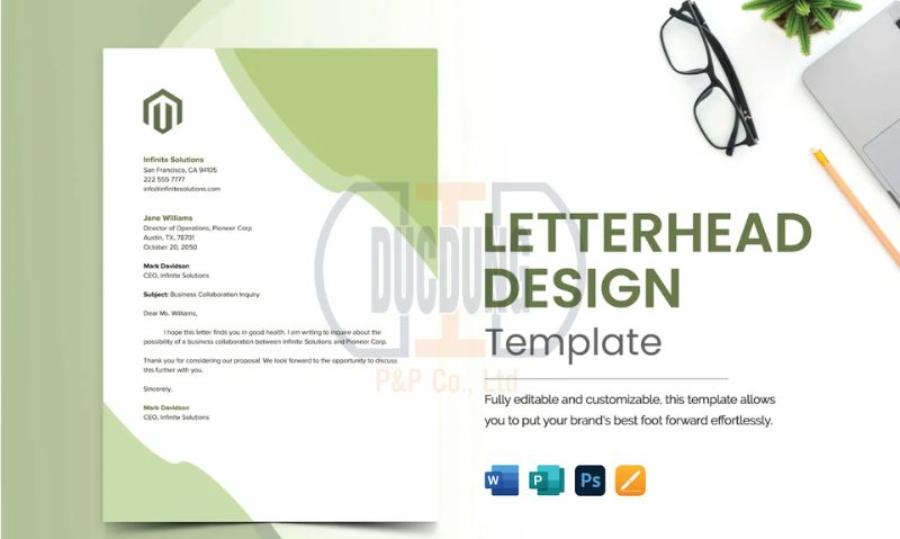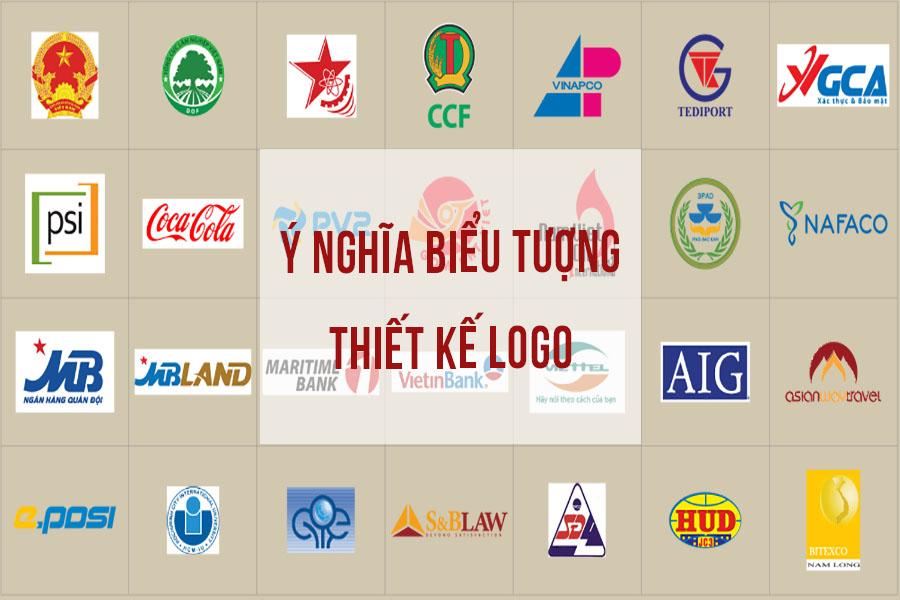Best Selling Products
What is Letterhead? All Information From A - Z About Letterhead Design
Nội dung
- 1. What is a Letterhead?
- 2. Why Is Letterhead Design Important?
- 2.1. Create a Professional Impression
- 2.2. Enhance Brand Value
- 2.3. Create Consistency in Communication
- 3. Basic Components of a Letterhead Design
- 3.1. Business Logo
- 3.2. Company Name
- 3.3. Contact Information
- 3.4. Slogan or Short Description
- 4. Mistakes to Avoid When Designing Letterhead
- 4.1. Too Many Details
- 4.2. Choosing the Wrong Font
- 4.3. No Guarantee of Information Accuracy
- 5. Complete set of Letterhead design secrets
- 5.1. Printing colors in Letterhead design
- 5.2. Letterhead design layout
- 5.3. Letterhead Size
- 5.4. Using Watermark in Letterhead Design
- 6. Conclusion
Discover what a Letterhead is and the importance of professional letterhead design in business. The article shares complete information about letterhead, how to use it and notes in design.

A business that wants to create a professional and trustworthy image cannot lack letterhead design. So what is letterhead? How to design an effective letterhead to enhance your brand? Join Sadesign to learn the details from A to Z about letterhead through the article below.
1. What is a Letterhead?
A letterhead, also known as a "letterhead," is a design that appears at the top of every official letter, corporate document, or document related to customer transactions. In fact, it is an important element in building a business's image and brand.
.jpg)
Through letterhead, businesses convey essential information about themselves, including logo, company name, address, phone number, and other elements. Letterhead design not only ensures professionalism in communication but also helps build credibility in the eyes of partners and customers.
With the strong development of technology, letterheads today are not only designed in paper form but also appear in electronic documents. Regardless of the format, letterheads still play an important role in expressing the company's brand impression.
2. Why Is Letterhead Design Important?
Letterhead design is not only a form of decoration for documents, but also an important marketing tool to help businesses stand out in the eyes of partners and customers. Here are some reasons why letterhead design is extremely important:
2.1. Create a Professional Impression
A beautifully designed letterhead that matches your brand identity will help your company create a professional impression at first sight. It shows that your company pays attention to every detail in its work, from the product/service to the way it communicates.
2.2. Enhance Brand Value
When you design a letterhead that matches your brand identity, including your logo, colors, and fonts, you are sending a clear message about your company's values. Your customers will feel professional and easily recognize your brand in all the documents you send out.
2.3. Create Consistency in Communication
Consistency in communication helps businesses build a strong image and build trust with customers. A letterhead design that matches other company documents will help create uniformity in official documents, thereby strengthening the relationship between the business and customers.
3. Basic Components of a Letterhead Design
A complete letterhead design usually includes the following basic elements:
3.1. Business Logo
Logo is an important symbol representing the business. Placing the logo in a visible position on the letterhead helps the recipient easily identify the company at first sight.
3.2. Company Name
The company name should be clearly displayed, legible and prominent. This makes it easy for the recipient to identify the business they are communicating with.
3.3. Contact Information
Including company address, phone number, email, website. This information helps partners and customers easily contact the company when necessary.
3.4. Slogan or Short Description
Some businesses choose to add a slogan or a brief description of the company’s mission and vision. This not only provides additional information but also helps customers better understand the core values of the business.
4. Mistakes to Avoid When Designing Letterhead
.jpg)
Even if you have design experience, there are some common mistakes that many people make when designing letterheads. Here are some mistakes to avoid:
4.1. Too Many Details
Using too many design elements can make your letterhead look cluttered and difficult to read. Keep your design simple and focus on the main elements.
4.2. Choosing the Wrong Font
Fonts should be easy to read and consistent with your business's brand image. Avoid using too many fonts in one letterhead.
4.3. No Guarantee of Information Accuracy
Contact information, addresses, and phone numbers must be carefully checked to avoid errors. Even a small mistake can ruin the professionalism of a business.
5. Complete set of Letterhead design secrets
A beautiful and suitable letterhead design will help increase the value of the business in the eyes of partners and customers. Below, we will share with you the secret to designing a standard letterhead, from printing color, layout, size to the use of watermark.
5.1. Printing colors in Letterhead design
Color is the first important factor to consider when designing a letterhead. Color not only helps to stand out, but also reflects the values and identity of the business brand. Choosing the right color will make your letterhead look professional and memorable.
.jpg)
When designing a letterhead, you should use the main colors of your brand identity. This will help maintain consistency and recognition across your company's publications. Also, keep in mind that colors that are too bright or too dark can make the text difficult to read, so you should choose colors that match the background and purpose.
Some popular color suggestions that you can apply to your letterhead design are soft pastel colors, neutral colors like gray, dark blue, or bright colors like red, orange when you want to create a strong impression. Besides, it is also important to coordinate colors in a harmonious and subtle way, avoid using too many colors in a design because this can make the letterhead confusing and unprofessional.
Choosing colors based on industry
Each industry has its own characteristics and may require different colors to reflect the nature of the work. For example, the finance and banking industry often favors elegant, less distracting colors, while creative industries such as graphic design may use stronger, more prominent colors.
Therefore, before deciding on the color for your letterhead, you need to clearly understand your target audience and the message you want to convey through the design.
5.2. Letterhead design layout
The layout of a letterhead design determines how effectively it conveys information. Each part of the letterhead needs to be arranged logically so as not to cause confusion for the viewer. It is important that all elements on the letterhead such as logo, contact information, and necessary details are clear, easy to read and easy to see.
.jpg)
Typically, in letterhead design, the company logo will be placed in the upper left or right corner of the page. The title and contact information such as address, phone number, website, email will be arranged in a horizontal or vertical row for easy reference.
5.3. Letterhead Size
Letterhead size is an indispensable element in design. Choosing the right size not only affects the professionalism of the publication but also directly affects printing and usage.
In Vietnam and many other countries, the standard letterhead size is usually A4 paper size (210mm x 297mm). This size is very popular and easy to print on office equipment. However, depending on the needs and special requirements of the business, you can also choose different sizes, for example, letterhead in letter size (216mm x 279mm) when sending international mail.
Proportion and balance in printing
When printing letterheads, you need to pay attention to the ratio between the length and width of the paper to ensure balance. In addition, some companies also choose to use special letterhead sizes, such as long letterheads, to create highlights or make a strong impression on customers. However, this size needs to be carefully considered so as not to lose the ease of use and storage.
Reasonable size and spacing
When designing a letterhead, you also need to pay attention to the spacing between elements in the layout. Appropriate spacing will help information be presented easily and not cluttered. Balancing the spacing between sections in the letterhead will create an airy, comfortable feeling for the reader.
In addition, the size of the elements in the letterhead should also be adjusted appropriately. The company logo should be large enough to be easily recognized but not too large to avoid obscuring other important information.
5.4. Using Watermark in Letterhead Design
Watermarking is a popular printing technique that helps to differentiate your letterhead. Watermarking not only protects copyright but also adds professionalism and impression to the publication.
When designing a watermark for a letterhead, you need to choose a light and subtle image or logo that does not affect the information on the paper. Usually, the watermark will be designed as a light or blurred image and located in the center of the page or the bottom corner so as not to obscure the text content.
Benefits of Using Watermark
Watermarks help create security for documents and enhance brand value. If you are using letterheads to send important notices, using a watermark is a way to protect documents from unauthorized copying. Additionally, watermarks are a way to strengthen brand image, making it easy for customers to identify your company even when just looking at the documents sent.
6. Conclusion
Letterhead is not only a piece of text decoration but also an important tool to help businesses create a professional image and increase brand value. Designing a beautiful, professional and suitable letterhead will bring many long-term benefits to businesses in building trust with customers and partners. Start investing in letterhead design now to enhance your brand.












































